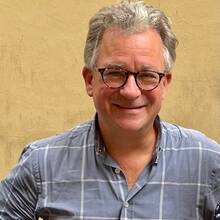Amidst the coverage of the muted celebrations of the Cuban Revolution’s 50th birthday, some good news: Cardinal Jaime Ortega of Havana and four other bishops were able, for the first time since 1959, to celebrate Mass on Christmas Day in several Cuban jails.
Some of the prisoners were especially glad to see the bishops. They are activists in the Varela Project, a human rights petition akin to Charter 88 in Czechoslovakia which is led by Oswaldo Payá, a Gandhi-like figure who leads the fledgling pro-democracy movement in Cuba.
The clue to the Catholic inspiration of the Varela Project is in its name. The priest-patriot Fr Félix Varela (1788 -1953) was the first architect of the Cuban independence movement. He was sentenced to death for his campaign against slavery but escaped to the US -- he was for a time vicar-general of New York -- where he published pro-independence tracts. He is an “official” hero in Cuba, but far overshadowed in offical propaganda by José Martí, the nineteenth-century liberal patriot in whose mantle Fidel Castro has always sought to cloak himself.
In 2003 Cardinal Ortega issued a letter on Fr Varela’s 150th anniversary -- officially to bolster the cause for his canonisation in Rome, but more particularly to define a vision for the transition. In reminding Cubans of Varela’s democratic and Christian vision for Cuba, he was gently offering a post-Castro manifesto.
The cardinal made clear that contemporary Cuba is about as far from Varela’s vision as it is possible to be. He described the “despair, tiredness and monotony” of Cubans, their anxiety about the future, and the desperation to make a decent living which has forced so many into illegal activities or exile. (Most Cubans are perforce engaged in "black-market" activities; the state turns a blind eye -- until they do something political. Then the police descend.)
Carrdinal Ortega also deplored the corrosion of Cuban society, its astonishingly high rates of abortion and divorce, its alcoholism and promiscuity, as well as the broken state of the Revolution’s much-vaunted health and education systems. He singled out for fierce criticism the boarding schools in the countryside where teenagers are separated from their families to be indoctrinated -- and usually abused.
There was nothing in the letter that a Spanish-speaking visitor to the island will not see for himself or hear every day from Cubans – in lowered tones on the street, or in the privacy of cars. But seeing it in print was astonishing.
Soon after that letter, just as the Varela Project was gathering a petition calling for human rights and democracy, came the most severe clampdown in Cuba in 20 years.
With the world’s attention deflected by the Iraq war, and on the pretext that President George W. Bush - who had tightened the disastrously counter-productive US economic embargo - was about to invade, Castro ordered the arrest of 75 dissidents, who were charged with aiding and abetting the imperialist enemy.
Many were well-known "independent" -- that is, illegal -- Cuban journalists writing for foreign newspapers. But 25 of the 75 were leaders of the Varela Plan, which was the real target of the crackdown. (To have arrested the 25 alone would have drawn attention to it and them.)
The regime was rattled by the Varela Plan, because this was a movement for democratic change was coming not from embittered counterrevolutionaries in Miami, but from home: from Cuban Catholic laymen opposed to the US embargo.
Two weeks after the crackdown -- known in Cuba as the ’Black Spring’ -- the Damas de Blanco (Ladies in White) group was formed, gathering on Sundays at Havana’s Santa Rita de Casia church. To this day they continue to walk 10 blocks to a nearby park after Mass. In the spirit of Argentina’s Mothers of the Plaza de Mayo, the Cuban women dress in white, with each woman carrying a pink flower and calling for the prisoners’ release.
The US bishops need to ensure that the release of the Varela Plan leaders, many of whom remain in Cuba’s jails five years after their arrest, is high on President-elect Obama’s policy agenda for the island -- together with a lifting of the US embargo, which has only buttressed the regime
Those prisoners are the architects of the new, post-socialist Cuba: patriotic, democratic and Christian. Only when they are released can Cuba be recognised as being on the path to democracy.
(To follow: the institutional Church’s position in Cuba).







